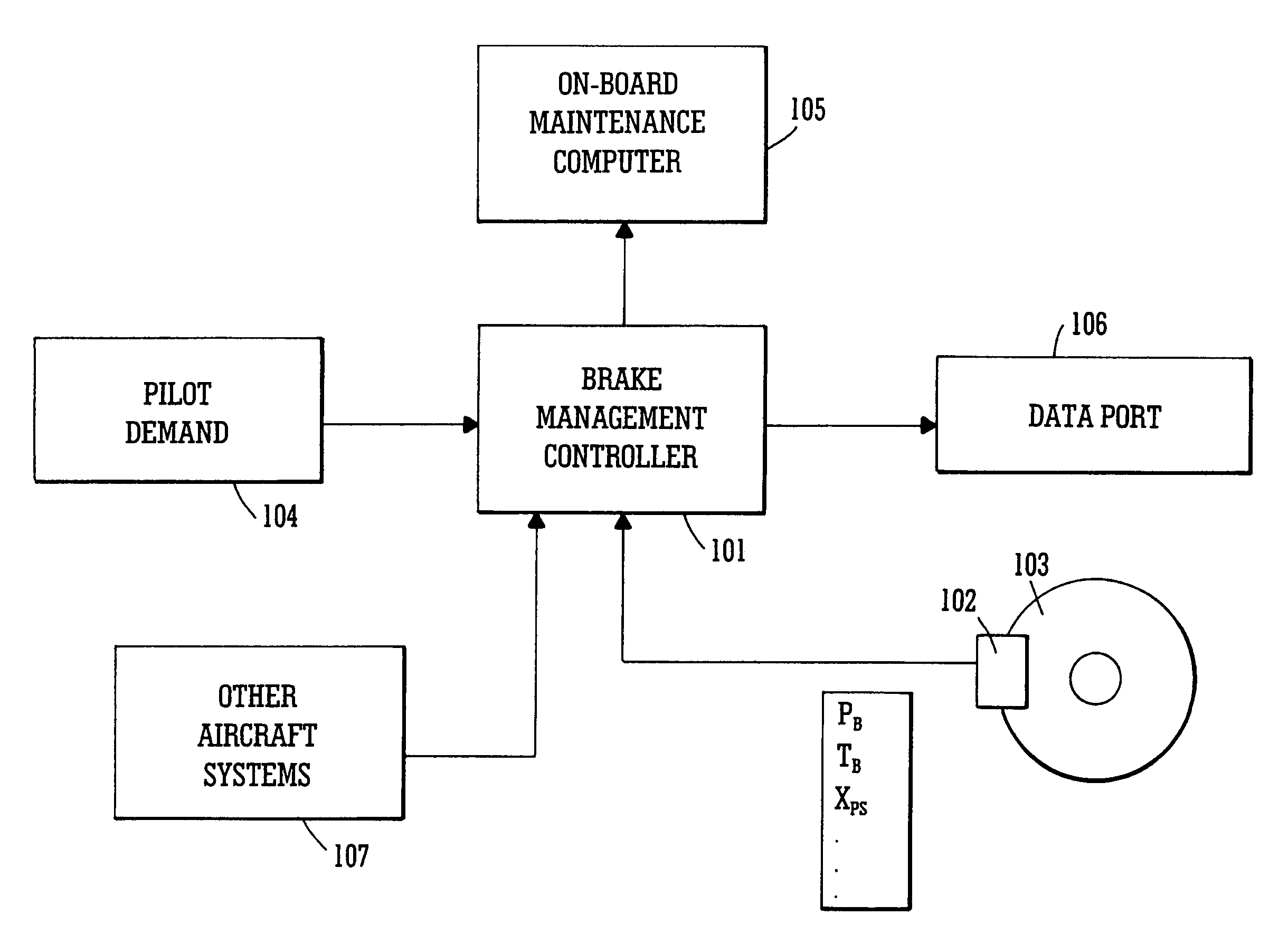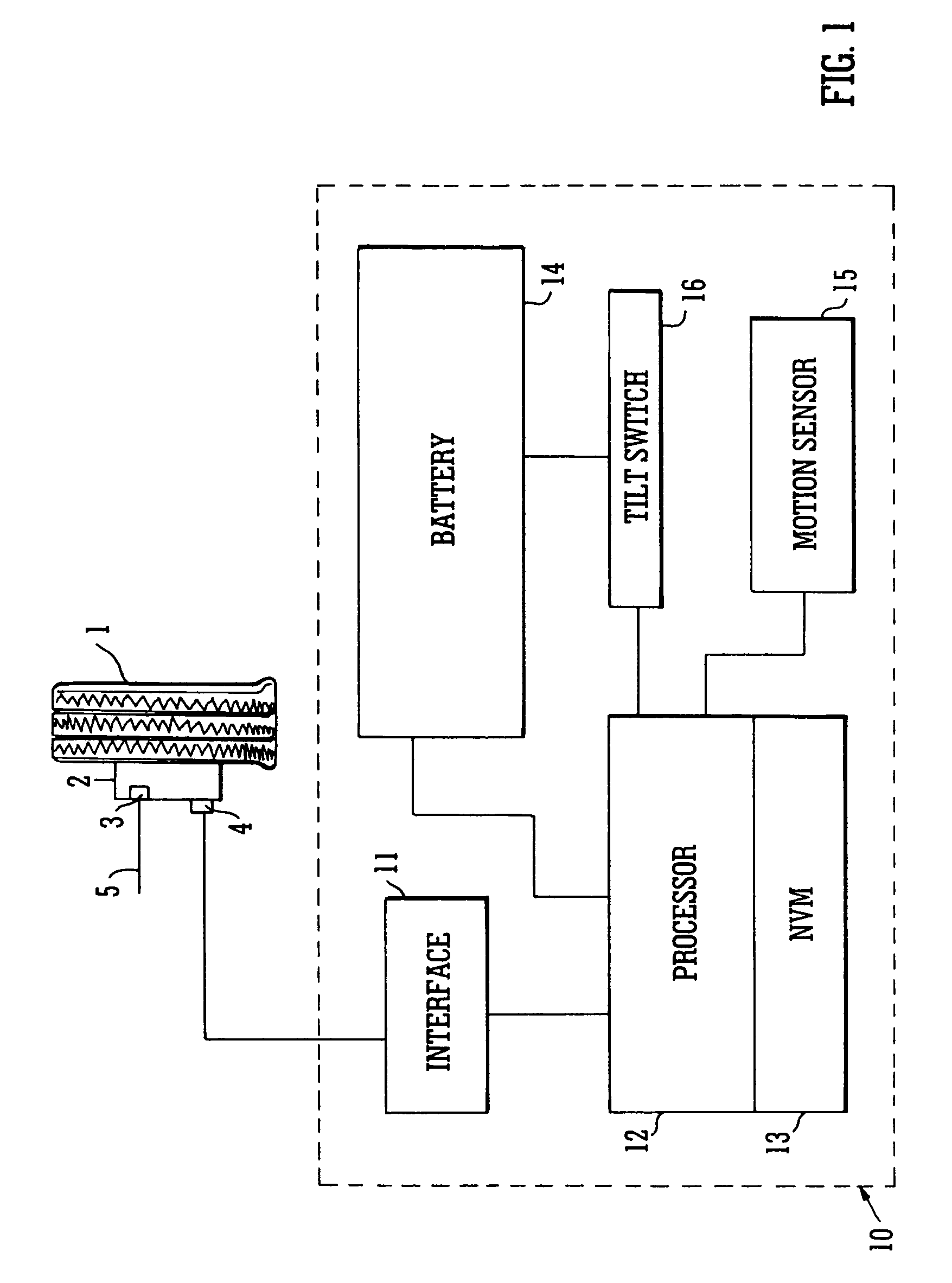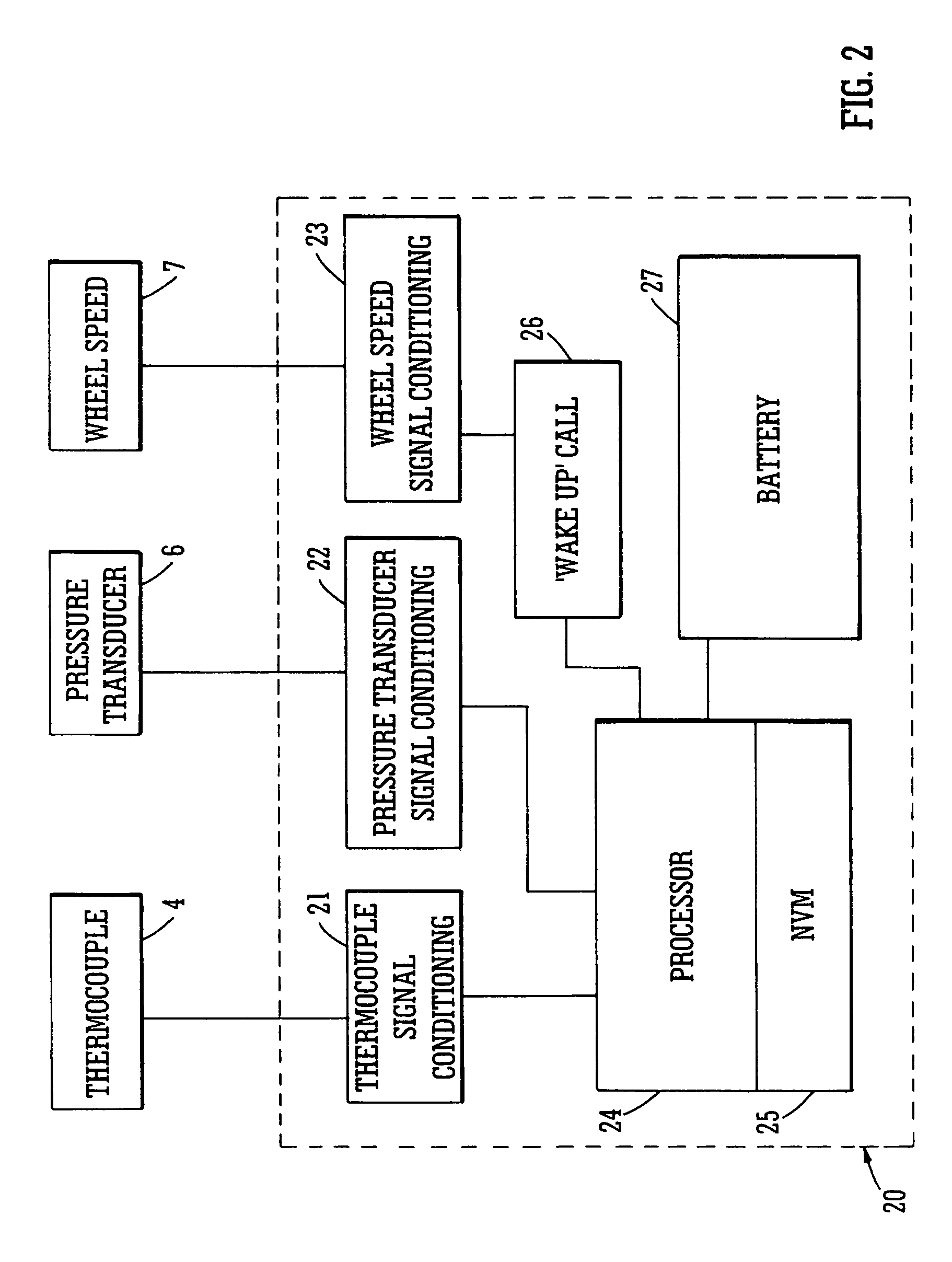Brake condition monitoring
a technology for condition monitoring and brakes, applied in brake systems, vehicle components, instruments, etc., can solve the problems of affecting the performance of brakes during service, the cost of carbon-carbon brake discs, and the importance of spares provisioning, so as to reduce the increase in temperature, reduce the torque of brakes, and reduce the effect of rapid deceleration
- Summary
- Abstract
- Description
- Claims
- Application Information
AI Technical Summary
Benefits of technology
Problems solved by technology
Method used
Image
Examples
Embodiment Construction
[0038]The system shown in FIG. 1 is applied to one wheel 1 of an aircraft (not shown) having a carbon-carbon multi-disc brake assembly 2 with a hydraulic actuator mechanism 3. Mechanism 3 is driven through line 5 by a hydraulic system of a type containing an ASCU and known in the art. A brake temperature sensing unit 4, typically a thermocouple, is located adjacent the assembly. To record brake usage, the signal from the thermocouple is input to unit 10 via an interface 11 to processor 12 where the signal is processed by an algorithm in known manner to detect when a brake application has been made. The processor output is recorded in the Non Volatile Memory (NVM) unit 13 from which information can be downloaded from a suitable access port (not shown) inside the unit 10 or on an external surface of the unit.
[0039]In order for unit 10 to be able to function independent of other control systems on the aircraft there is provided within unit 10 battery means 14 for providing power to the...
PUM
 Login to View More
Login to View More Abstract
Description
Claims
Application Information
 Login to View More
Login to View More - R&D
- Intellectual Property
- Life Sciences
- Materials
- Tech Scout
- Unparalleled Data Quality
- Higher Quality Content
- 60% Fewer Hallucinations
Browse by: Latest US Patents, China's latest patents, Technical Efficacy Thesaurus, Application Domain, Technology Topic, Popular Technical Reports.
© 2025 PatSnap. All rights reserved.Legal|Privacy policy|Modern Slavery Act Transparency Statement|Sitemap|About US| Contact US: help@patsnap.com



